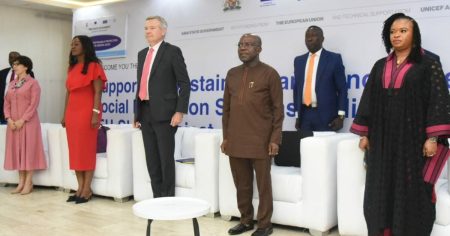Africa’s Creative Economy: A Catalyst for Transformation
Africa’s creative industry is rapidly emerging as a powerful engine for economic growth, poised to rival, and potentially surpass, the contributions of traditional sectors like oil and gas. This burgeoning sector, encompassing film, music, fashion, digital content, and sports, is characterized by its youth-driven, labor-intensive, and innovation-led nature, aligning perfectly with the continent’s development priorities. Nigeria, with its globally recognized Nollywood film industry and the infectious rhythms of Afrobeats, exemplifies this creative surge. However, realizing the full potential of this sector requires strategic investments in infrastructure, intellectual property protection, and robust distribution channels. This is precisely where institutions like the African Export-Import Bank (Afreximbank) play a crucial role, providing financial support, capacity building, and market access facilitation through initiatives like the Creative Africa Nexus (CANEX). With the right backing, the creative economy stands to transform Africa’s economic landscape and enhance its global influence.
The creative sector’s significance extends beyond mere economic gains. It embodies Africa’s identity on the world stage, shaping perceptions and bolstering the continent’s soft power, a valuable asset for attracting investment and trade. Just as Hollywood propelled Levi’s jeans and cowboy boots to global recognition, Africa’s creative content has the power to narrate its own story, influencing global tastes and driving demand for its goods and services. This “invisible gold,” as Afreximbank aptly terms it, represents an untapped resource with immense potential. The increasing formalization of the sector, driven by supportive policies and the growing engagement of financial institutions, further strengthens its trajectory. Afreximbank’s commitment to the creative economy reflects the belief that it holds the key not only to entertaining the world but also to transforming Africa and beyond.
Afreximbank’s commitment to the creative sector is exemplified by its multi-pronged approach through the CANEX program. This initiative focuses on six key pillars: financing, capacity building, applications and partnerships, digitization, policy advocacy, and export development and investment promotion. A $2 billion facility has been established to provide credit, complemented by CANEX Creations Incorporated, an intellectual property investment vehicle designed to empower creatives in commercializing their work. The forthcoming Africa Film Fund further underscores this commitment. A central goal is to foster collaboration between Africa and its diaspora, termed “Global Africa,” enabling greater ownership of content, addressing distribution challenges, and ultimately fostering growth by controlling the narrative.
A key challenge facing African creatives is the disparity in royalty structures compared to their Western counterparts. Global platforms operating in Africa often offer significantly lower payouts, hindering the full monetization of African intellectual property. This discrepancy stems from several factors, including algorithms that are not optimized for African content and lower advertising revenues generated from the continent. Addressing this requires an “Africa-first” approach to talent commercialization, potentially involving the creation of new distribution systems tailored to local realities and scalable to Africa’s vast population. Rethinking consumption models to align with Africa’s economic context is also crucial. While advocating for fairer terms on global platforms remains important, the long-term solution lies in building sustainable, Africa-centric systems.
The African diaspora plays a pivotal role in building this vibrant economy. Afreximbank recognizes intra-African trade as encompassing not only commerce between African countries but also among Africans in the diaspora. This broader definition acknowledges the significant demand driven by Africans abroad for African products. Leveraging the cultural and historical ties between Africa and its diaspora, particularly in regions like the Caribbean and Brazil, is crucial for forging structured economic relationships. Currently, a significant flow of funds from the diaspora to Africa exists primarily in the form of remittances. However, channeling these funds into Africa’s industrialization and development agenda requires a more structured framework. Afreximbank is working to address this by exploring instruments like diaspora bonds, facilitating cultural and professional exchange, and directing diaspora investment into high-potential African companies. This strategic engagement ensures that diaspora contributions meaningfully contribute to sustainable economic transformation.
Building a robust ecosystem for Africa’s creative economy faces various challenges. The perception of risk among traditional financial institutions, who often struggle to assess the value of creative assets, hinders access to capital for creatives. Afreximbank’s CANEX program aims to bridge this gap by offering tailored financial solutions and de-risking investments. Another hurdle is the informal nature of the creative economy, which limits growth and cross-border trade. Capacity-building initiatives, including masterclasses, workshops, and incubation programs, are crucial for formalizing and professionalizing the industry. Intellectual property protection remains a critical concern, addressed through CANEX Creations Incorporated’s investments in IP-based businesses and initiatives. Finally, changing the perception of the creative sector from mere entertainment to a serious economic driver is vital. Advocacy efforts targeting policymakers and promoting reforms in areas like services trade and intellectual property rights are essential for unlocking the sector’s full potential. The upcoming Intra-African Trade Fair 2025, featuring the Global African Platform, presents a significant opportunity to connect creatives with investors, buyers, and collaborators, further propelling the growth of Africa’s dynamic creative economy.














